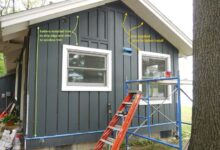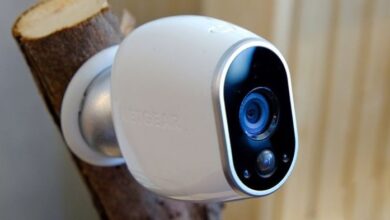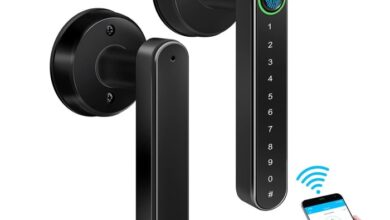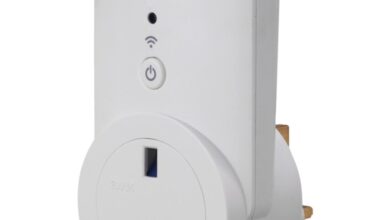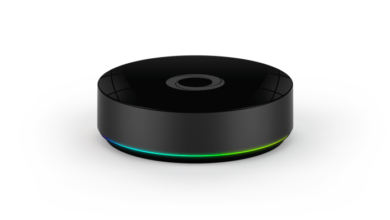Automated Blinds Smart Home Convenience Redefined
Automated Blinds: Imagine a world where your window treatments adjust seamlessly to the sun’s trajectory, optimizing natural light and conserving energy. This isn’t science fiction; it’s the reality offered by the increasingly sophisticated world of automated blinds. From motorized shades to smart home integration, these systems offer unparalleled convenience, enhanced security, and significant energy savings. This deep dive explores the diverse types, installation processes, smart features, and long-term benefits of automated blinds, transforming your home into a haven of comfort and efficiency.
We’ll cover everything from the mechanics of different blind types – battery-powered, motorized, and those seamlessly integrated into your smart home ecosystem – to the aesthetic choices available. We’ll also delve into the practical aspects: installation, maintenance, and troubleshooting common issues. Ultimately, this guide empowers you to make informed decisions about upgrading your home with the latest in automated window treatments.
Types of Automated Blinds
Automating your window treatments offers a blend of convenience, energy efficiency, and modern aesthetics. The market offers a diverse range of automated blinds, each with its own unique mechanism, material composition, and set of features. Choosing the right system depends heavily on your individual needs and preferences, considering factors like budget, home style, and desired level of smart home integration.
This exploration will delve into the different types available, highlighting their strengths and weaknesses to aid in your decision-making process.
Automated Blind Mechanisms
Automated blinds utilize various mechanisms to achieve their motorized functionality. Motorized blinds are the most common, employing a small electric motor integrated into the headrail to raise and lower the blinds. These motors can be powered directly by a wired connection to your home’s electrical system or via a battery pack, offering greater flexibility in placement. Smart home integration is increasingly prevalent, allowing control through voice assistants, smartphone apps, or integrated home automation systems.
This integration offers unparalleled convenience and customization options, allowing for scheduled operation, remote control, and integration with other smart home devices.
Automated Blind Materials
The materials used in automated blinds significantly impact their appearance, durability, and light-filtering capabilities. Fabric blinds, available in a wide array of colors, patterns, and opacities, offer versatility and are suitable for various décor styles. Wood blinds provide a classic and elegant look, adding warmth and sophistication to a room. Bamboo blinds offer a more natural and sustainable option, aligning with eco-conscious design preferences.
Cellular shades, also known as honeycomb shades, are known for their excellent insulation properties, contributing to energy savings. Each material choice presents a unique balance of aesthetics, functionality, and cost.
Comparison of Automated Blind Types
Different types of automated blinds offer varying features and benefits. Motorized blinds connected directly to the mains power are typically the most robust and reliable, offering consistent performance. Battery-powered options provide greater flexibility in placement, but require periodic battery replacements. Smart blinds provide the ultimate convenience, integrating seamlessly into modern smart homes and offering advanced control options such as scheduling and remote operation.
The selection process should consider factors like desired level of control, ease of installation, and long-term maintenance requirements. For example, a homeowner prioritizing energy efficiency might opt for cellular shades, while someone seeking a luxurious aesthetic might choose motorized wood blinds.
Automated Blind Price, Efficiency, and Installation
The following table summarizes the price points, energy efficiency, and ease of installation for three common types of automated blinds:
| Blind Type | Price Point | Energy Efficiency | Ease of Installation |
|---|---|---|---|
| Motorized Fabric Blinds | Medium-High | Medium | Medium |
| Battery-Powered Cellular Shades | Medium | High | Easy |
| Smart Motorized Wood Blinds | High | Medium-High | Medium-High |
Smart Home Integration
Stepping into the world of smart homes often feels like entering a futuristic movie set. The convenience and control offered by interconnected devices are undeniable, and automated blinds are a key player in this increasingly popular trend. Seamless integration with existing smart home ecosystems transforms these window treatments from simple mechanisms into intelligent components of a truly connected living space.
This elevates not only comfort but also security and energy efficiency.Integrating automated blinds into your smart home system unlocks a wealth of benefits, significantly enhancing both convenience and security. The ability to schedule precise opening and closing times, adjust blinds based on sunlight levels, and control them remotely all contribute to a more efficient and comfortable home environment. Moreover, the strategic use of automated blinds can significantly improve your home’s security posture, creating a deterrent to potential intruders.
Compatibility with Popular Smart Home Ecosystems
Automated blinds readily integrate with leading smart home platforms like Amazon Alexa, Google Home, and Apple HomeKit. This compatibility allows for voice control, scheduling, and integration with other smart devices. For example, imagine waking up to sunlight gently streaming through your windows, thanks to pre-programmed blinds that open at sunrise. Or, visualize effortlessly closing your blinds from your phone while on vacation, giving the illusion of occupancy and deterring potential burglars.
This interoperability means you aren’t locked into a specific brand or ecosystem; most manufacturers offer compatibility with multiple platforms, ensuring flexibility and choice.
Benefits of Smart Blind Integration
The benefits extend beyond simple convenience. Smart blinds offer significant energy savings by automatically adjusting to sunlight and temperature. By preventing excessive heat gain during the day and minimizing heat loss at night, they can contribute to lower energy bills and a reduced carbon footprint. Furthermore, they enhance home security by simulating occupancy even when you’re away.
This can deter potential thieves who are more likely to target homes that appear unoccupied. This proactive security measure adds a layer of protection beyond traditional security systems.
Automated Blinds and Enhanced Home Security
Consider this scenario: You’re away on vacation. Using your smart home app, you schedule your blinds to open and close at various times throughout the day, mimicking the normal routines of an occupied house. This creates the illusion of someone being home, discouraging potential burglars who often look for signs of an empty residence. Combined with smart lighting and other security measures, this layered approach significantly strengthens your home’s security posture.
The unpredictable nature of the blind movements further enhances the effectiveness of this deterrent strategy.
Voice Control Examples
Voice commands provide the ultimate in convenience. Simple phrases like “Alexa, open the living room blinds,” “Hey Google, close the bedroom blinds,” or “Hey Siri, set the blinds to 50% open” allow for effortless control throughout the day. The ease and speed of voice commands make automated blinds an intuitive and enjoyable part of your daily routine, adding another layer of sophistication to your smart home setup.
This hands-free control is particularly beneficial in situations where using a phone or app might be inconvenient, such as when your hands are full or you are unable to reach a control device.
Installation and Maintenance: Automated Blinds
Installing and maintaining automated blinds might seem daunting, but with a methodical approach, it’s a manageable process that significantly extends the lifespan and efficiency of your smart home investment. Understanding the nuances of installation, troubleshooting common problems, and implementing a regular maintenance schedule are crucial for seamless operation and long-term value. This guide provides practical steps and valuable tips to ensure your automated blinds remain a functional and aesthetically pleasing addition to your home.
Automated Blind Installation Procedures
The installation process varies depending on the type of automated blind—roller, Venetian, cellular, or Roman—and the chosen motorization system. Generally, however, the core steps involve careful measurements, secure mounting, and precise wiring. For instance, installing motorized roller blinds often involves attaching a bracket to the window frame, inserting the blind into the bracket, and connecting the power source. Venetian blinds, on the other hand, might require more intricate adjustments to ensure smooth operation of the slats.
Always consult the manufacturer’s instructions for detailed, model-specific guidance. Ignoring these instructions can lead to improper installation, potential damage, and voiding any warranties.
Troubleshooting Common Automated Blind Issues
Malfunctioning automated blinds can be frustrating. Common problems include unresponsive motors, erratic movement, or noisy operation. Before calling a technician, systematically check the power supply, ensuring the motor is correctly plugged in and the circuit breaker hasn’t tripped. Inspect the blind’s components for any visible obstructions or damage. A simple reset of the motor, often involving a power cycle, might resolve minor glitches.
Persistent problems may indicate a more serious issue, such as a faulty motor or damaged wiring, necessitating professional assistance. Regular maintenance, as Artikeld below, can often prevent these issues from arising in the first place.
Automated Blind Maintenance and Cleaning, Automated Blinds
Regular maintenance is paramount for optimal performance and longevity. Dust accumulation, especially on motorized components, can impede movement and shorten the lifespan of the system. A yearly cleaning routine is recommended. This involves carefully dusting all accessible surfaces using a soft cloth or brush. For more thorough cleaning, use a slightly damp cloth, avoiding excessive moisture that could damage the motor or fabric.
Pay particular attention to the tracks and rails, ensuring they are free from debris. Lubricating moving parts with a specialized lubricant designed for electric motors will significantly reduce friction and noise, ensuring smooth, quiet operation. This simple step, often overlooked, dramatically extends the life of the motor and overall system.
Step-by-Step Guide for Cleaning and Lubricating Motorized Components
First, disconnect the power supply to the blind’s motor. This crucial safety precaution prevents accidental injury or damage. Next, carefully remove any dust or debris from the motor housing using a soft brush or compressed air. Then, apply a small amount of specialized motor lubricant to the moving parts, following the manufacturer’s instructions. Avoid over-lubrication, which can attract more dust and grime.
After lubrication, gently operate the blind a few times to distribute the lubricant evenly. Finally, re-connect the power supply and test the blind’s operation to ensure smooth and quiet movement. This methodical approach ensures efficient cleaning and lubrication, maintaining the efficiency and longevity of your automated blinds.
Energy Efficiency and Cost Savings
Automated blinds offer a surprisingly effective way to boost your home’s energy efficiency and, consequently, lower your energy bills. By intelligently managing sunlight and heat flow, these smart window treatments can significantly reduce your reliance on heating and cooling systems, leading to substantial long-term savings. This isn’t just about convenience; it’s about making a tangible impact on your household budget and your carbon footprint.Automated blinds achieve energy savings primarily through precise control over natural light and temperature regulation.
Unlike manual blinds, which often remain open or closed regardless of the changing external conditions, automated systems dynamically adjust based on factors like time of day, sunlight intensity, and even your preferred temperature settings. This responsiveness minimizes heat gain during the day and heat loss at night, reducing the workload on your HVAC system.
Sunlight and Temperature Regulation
The core principle behind the energy efficiency of automated blinds lies in their ability to optimize solar heat gain. During peak sunlight hours, automated blinds can automatically close, preventing excessive heat from entering your home and reducing the strain on air conditioning. Conversely, during cooler periods, they can open to allow natural sunlight to passively heat your space, minimizing the need for heating systems.
This dynamic adjustment, impossible with manual blinds, results in a more stable indoor temperature, leading to lower energy consumption. Consider a scenario where your south-facing windows are constantly bombarded with sunlight. Automated blinds could close automatically during the hottest part of the day, preventing your living room from becoming an oven, thus lowering your air conditioning usage.
Energy Consumption Reduction Compared to Manual Blinds
Studies have shown that homes equipped with automated blinds can experience a noticeable reduction in energy consumption compared to those using manual blinds. For example, a study by the Lawrence Berkeley National Laboratory indicated that automated window coverings can reduce cooling loads by up to 17%. This translates directly to lower electricity bills. The difference is particularly pronounced in regions with extreme temperature fluctuations, where the precise control offered by automated blinds becomes crucial for maintaining comfortable indoor temperatures without excessive energy use.
Long-Term Cost Savings
The initial investment in automated blinds might seem significant, but the long-term cost savings associated with reduced energy consumption can quickly offset the initial expense. Depending on factors like your climate, home size, and energy rates, the return on investment can be substantial within a few years. Many homeowners find that the savings on their energy bills far outweigh the cost of purchasing and installing automated blinds, making them a worthwhile investment for both comfort and financial gain.
Return on Investment
The following table illustrates the potential return on investment (ROI) for automated blinds based on energy savings. These figures are estimates and will vary depending on several factors, including your location, energy prices, and the efficiency of your HVAC system.
Examine how Smart Thermostat can boost performance in your area.
| Scenario | Annual Energy Savings | Installation Cost | ROI (Years) |
|---|---|---|---|
| Small Home, Moderate Climate | $150 | $1000 | 6.7 |
| Medium Home, Hot Climate | $300 | $2000 | 6.7 |
| Large Home, Extreme Climate | $600 | $4000 | 6.7 |
Note: These ROI calculations are simplified examples and do not account for potential increases in energy prices or variations in individual usage patterns. A more precise ROI calculation should consider your specific energy consumption data and local energy costs.
Aesthetic Considerations and Design
Automated blinds offer a compelling blend of functionality and aesthetics, seamlessly integrating into diverse interior design schemes to enhance both practicality and visual appeal. Their adaptability extends beyond mere window coverings; they become integral design elements, subtly shaping the mood and ambiance of a space. The right choice can dramatically elevate the overall aesthetic, transforming a room from ordinary to extraordinary.Blinds’ impact on interior design is multifaceted, offering opportunities to enhance visual harmony and stylistic cohesion.
Their versatility allows for customization that perfectly complements existing décor or serves as a striking focal point. Careful consideration of color, material, and operational style is crucial for achieving a cohesive and aesthetically pleasing result.
Color, Pattern, and Material Options for Automated Blinds
The sheer variety of colors, patterns, and materials available for automated blinds provides an unparalleled level of customization. Imagine sleek, minimalist white blinds in a modern Scandinavian living room, their clean lines echoing the room’s uncluttered design. Conversely, rich, textured fabrics in deep jewel tones could create a luxurious atmosphere in a traditional setting. Options range from sheer fabrics that filter light while maintaining privacy to blackout blinds offering complete darkness for optimal sleep.
Materials include durable polyester, elegant linen, and even sustainable bamboo, catering to diverse preferences and budgets. Patterns vary from subtle textures to bold geometric designs, providing ample opportunities for personalized expression. Consider the interplay of light and shadow; sheer fabrics will create a softer, diffused light, while opaque materials will provide a more dramatic effect. The choice ultimately hinges on the desired ambiance and the existing décor.
Automated Blinds in Three Distinct Room Designs
Imagine a minimalist, modern bedroom. Sleek, white roller blinds, seamlessly integrated into the window frame, provide clean lines and unobtrusive functionality. Their motorized operation adds a touch of futuristic sophistication, while the white color complements the overall palette of the room, enhancing its airy feel. The subtle texture of the fabric adds a layer of depth without distracting from the minimalist aesthetic.
Light control is effortless, allowing for a gradual transition from morning sunlight to a restful evening darkness.Now picture a sun-drenched living room with a bohemian flair. Here, natural bamboo blinds with a subtle woven pattern add warmth and texture. Their earthy tones complement the room’s relaxed vibe, while their ability to filter light creates a soft, inviting glow.
The motorized operation adds a touch of modern convenience without compromising the room’s organic aesthetic. The blinds’ natural material complements the other natural elements in the room, such as woven rugs and wooden furniture, creating a cohesive and harmonious space.Finally, visualize a sophisticated home office. Here, sophisticated cellular shades in a deep charcoal grey provide both light control and insulation.
Their modern design adds a touch of elegance, while their ability to block out distracting light enhances productivity. The automated operation allows for seamless adjustment of light levels throughout the day, optimizing the workspace for different tasks. The dark grey color provides a neutral backdrop that complements the room’s professional aesthetic, while the cellular design offers an extra layer of insulation, reducing energy costs and improving comfort.
Safety and Security Features
Automated blinds offer convenience and style, but their safety and security aspects deserve careful consideration. Understanding potential hazards and leveraging the available safety and security features is crucial for maximizing the benefits of this technology while minimizing risks. This section delves into the specific safety features and security enhancements provided by automated blinds, highlighting their role in protecting your home and family.
Potential Safety Hazards and Preventative Measures
Automated blinds, while convenient, present some potential safety hazards, primarily concerning children and pets. Entanglement in cords or moving parts is a significant risk. To mitigate these risks, many manufacturers now offer cordless systems or systems with retractable cords. Regular inspections for wear and tear on the mechanisms are also vital. Furthermore, choosing blinds with smooth, rounded edges minimizes the chance of injuries from impact.
For homes with young children or pets, opting for blinds with integrated safety features like automatic stop mechanisms that detect obstacles is highly recommended. These systems are designed to reverse direction upon encountering an obstruction, preventing potential injury. Ultimately, proactive maintenance and careful selection of safety-focused models are key to minimizing potential hazards.
Child Safety Locks and Intrusion Detection
Many modern automated blind systems incorporate child safety locks to prevent accidental operation by children. These locks typically involve a physical key or a digital code, preventing unauthorized access and manipulation of the blinds. Beyond child safety, some advanced systems integrate with home security systems, offering intrusion detection capabilities. For instance, unusual blind movement patterns, such as sudden opening or closing at odd hours, can trigger alerts, notifying homeowners of potential break-ins.
This integration enhances home security by providing an additional layer of protection beyond traditional alarm systems. The benefits are twofold: increased child safety and improved home security, making these systems a smart investment.
Enhanced Home Security with Automated Blinds
Automated blinds contribute significantly to home security by creating the illusion of occupancy, even when the house is empty. Pre-programmed schedules can simulate normal activity, opening and closing blinds at different times of the day, deterring potential intruders who might otherwise target unoccupied homes. This feature is particularly beneficial for those frequently traveling or working away from home. The automated nature of these blinds allows for customized settings, adapting to the specific needs and routines of each household, thereby maximizing their security potential.
This is a cost-effective way to enhance home security without the need for extensive and costly modifications.
Safety Feature Comparison Across Brands
Different brands of automated blinds offer varying levels of safety features. While some focus on basic safety mechanisms like obstruction detection, others integrate more advanced technologies like child safety locks and connectivity with home security systems. For example, Brand A might prioritize cordless operation, minimizing entanglement risks, while Brand B might emphasize its robust child safety lock mechanism and integration with smart home platforms.
Consumers should carefully compare the specific safety features offered by each brand before making a purchase, considering the needs and safety concerns specific to their household. This detailed comparison allows for informed decision-making, ensuring that the chosen system aligns with individual safety priorities.
Future Trends in Automated Blinds
The world of automated blinds is poised for significant advancements, driven by converging technologies and evolving consumer preferences. We’re moving beyond simple automated opening and closing to a future where blinds seamlessly integrate with our lives, enhancing both convenience and energy efficiency in unprecedented ways. This evolution will be shaped by the integration of artificial intelligence, sophisticated sensors, and innovative materials, creating a smarter, more responsive, and aesthetically pleasing window treatment experience.The integration of artificial intelligence (AI) and machine learning (ML) will revolutionize automated blind systems.
AI-powered blinds will learn user preferences over time, anticipating needs and adjusting accordingly. For example, a system might learn to automatically close blinds during peak sun hours to reduce glare and heat, or open them at sunrise to let in natural light. This predictive capability significantly enhances convenience and energy savings. Furthermore, ML algorithms can analyze weather data and adjust blind positions preemptively, maximizing energy efficiency based on external conditions.
Imagine a system that anticipates a sudden downpour and closes blinds automatically to protect your furniture from rain damage. This proactive functionality transforms automated blinds from simple convenience features into intelligent home guardians.
AI and Machine Learning Integration in Automated Blinds
AI and ML algorithms will allow for personalized automation beyond simple timers. Blinds will learn individual user preferences, such as preferred light levels at different times of the day, automatically adjusting to create optimal lighting conditions throughout the day. This level of personalization offers a significant improvement over current systems that rely on pre-programmed schedules. The learning capabilities will continuously adapt to changing user behaviors, ensuring optimal comfort and convenience.
For instance, if a user consistently overrides the automated settings during certain times, the AI will learn from this feedback and adjust its algorithms accordingly, providing a truly personalized experience. Data collected by the system can be further analyzed to offer insights into energy consumption patterns, allowing users to fine-tune their energy-saving strategies.
Predictive Capabilities and Proactive Functionality
Future automated blinds will incorporate sophisticated sensors to monitor environmental conditions, such as sunlight intensity, temperature, and even occupancy. These sensors will allow the blinds to react proactively to changes in the environment, optimizing energy efficiency and comfort. For example, the system could automatically close blinds during a heatwave to prevent overheating or open them on a cloudy day to maximize natural light.
Furthermore, integration with smart home ecosystems will enable advanced automation scenarios. Imagine a system that automatically closes blinds when the security system is activated, adding an extra layer of security. This proactive functionality will not only enhance convenience but also improve home security and energy management. This level of integration is already starting to emerge with systems capable of reacting to weather forecasts and adjusting accordingly.
Innovative Features in Future Automated Blind Systems
Future automated blind systems may incorporate advanced features such as voice control, gesture recognition, and integration with other smart home devices. Imagine controlling your blinds simply by speaking a command or making a gesture. This seamless integration will enhance the overall user experience and further streamline home automation. Moreover, future blinds might incorporate self-cleaning mechanisms, reducing the need for manual cleaning and maintenance.
The integration of materials with self-healing properties could further enhance durability and longevity. These advancements will make automated blinds more user-friendly, durable, and efficient. For example, some companies are already exploring the use of solar-powered motors to eliminate the need for external power sources, making the system more sustainable and reliable.
End of Discussion
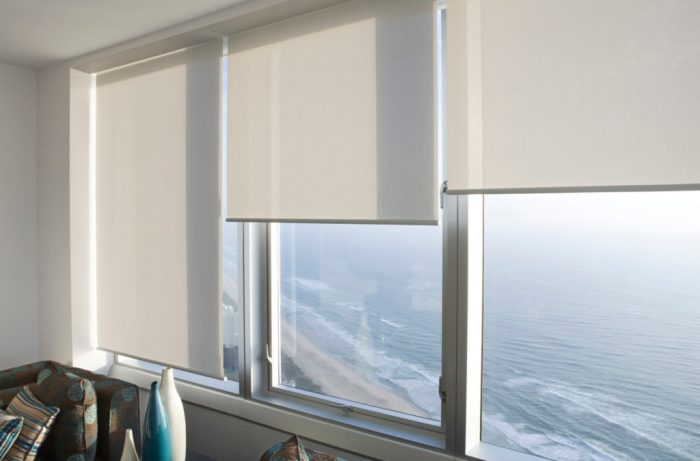
Integrating automated blinds into your home isn’t just about convenience; it’s about elevating your living experience. From the energy savings and enhanced security to the sheer elegance they bring to your interior design, the benefits are undeniable. This guide has provided a comprehensive overview of the various types, installation methods, smart home capabilities, and long-term cost considerations. By understanding these factors, you can confidently choose a system that perfectly complements your lifestyle and home aesthetic, creating a space that’s both beautiful and incredibly efficient.



